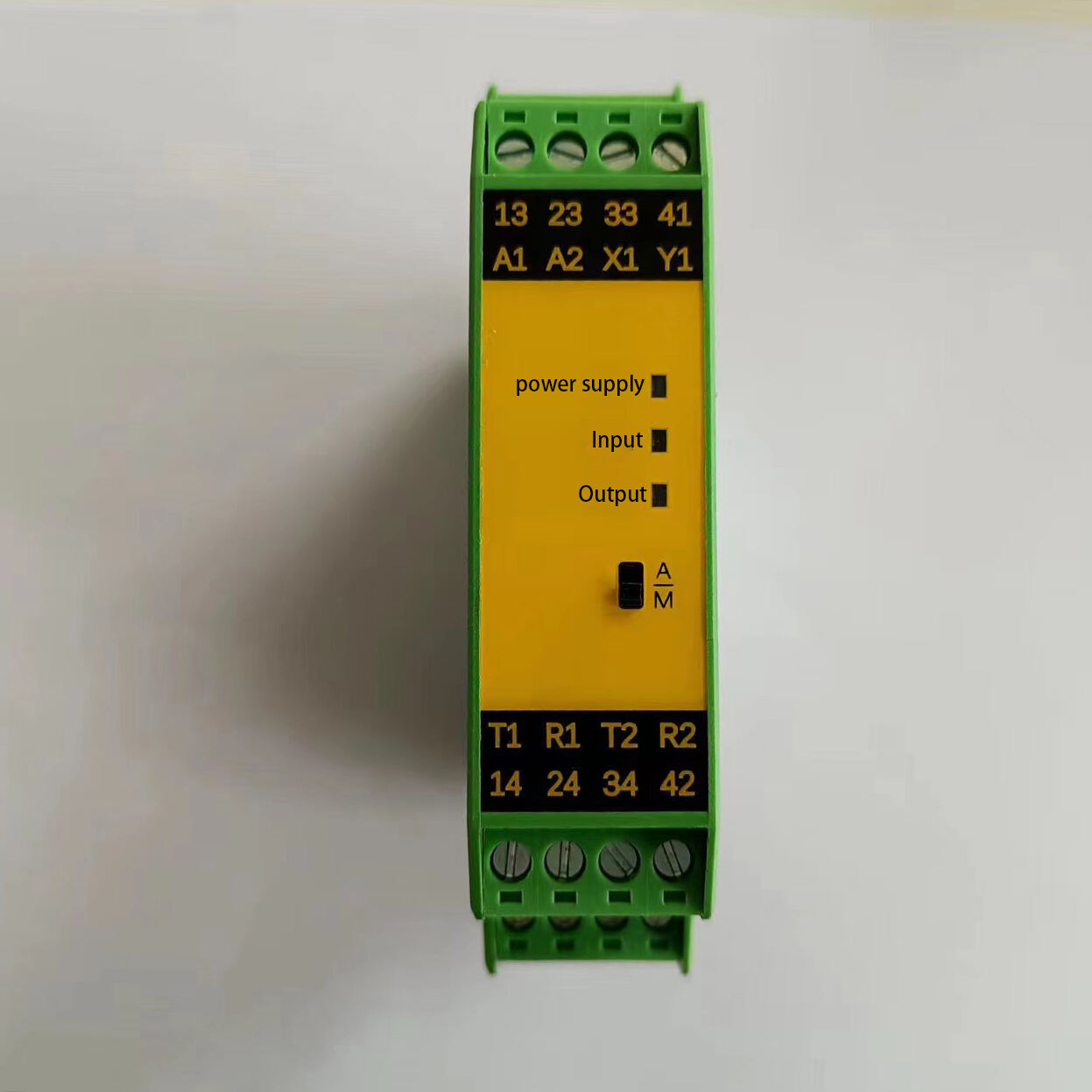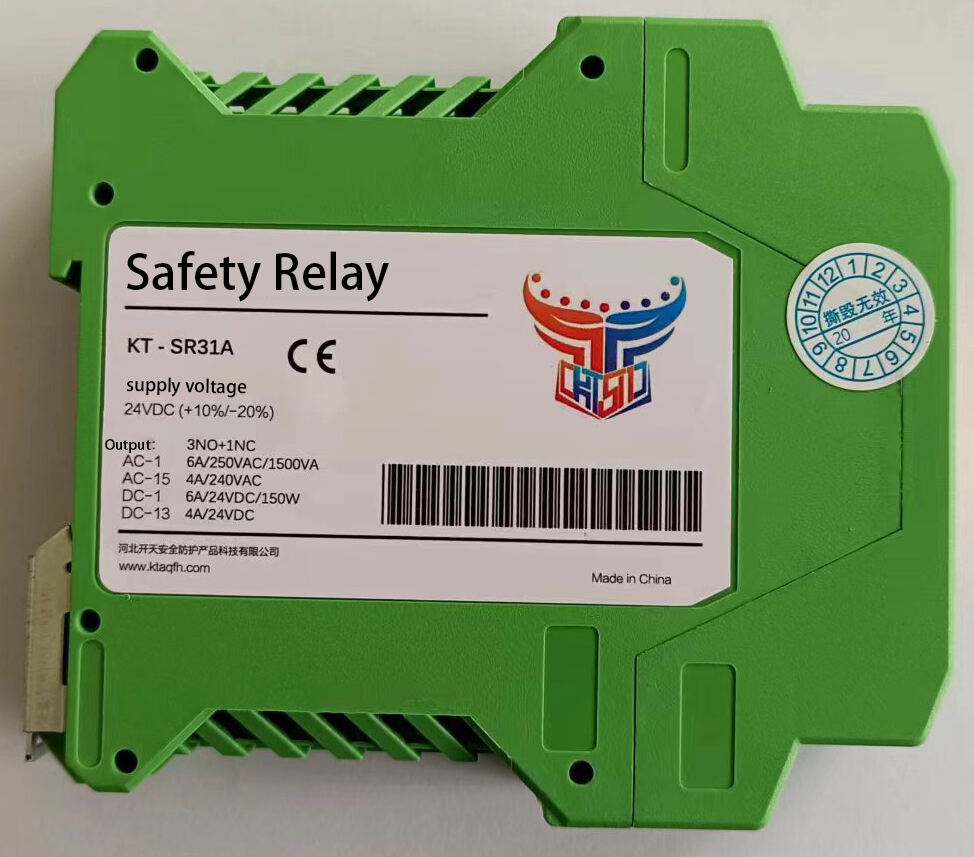Understanding the Critical Role of Safety Systems in Industrial Machinery
In today's industrial landscape, the protection of both personnel and equipment stands as a paramount concern. At the heart of these protective measures lie safety relays, sophisticated devices that form the backbone of machinery safety systems. These essential components serve as vigilant guardians, monitoring various safety inputs and ensuring immediate shutdown when hazardous conditions arise. The significance of safety relays extends far beyond simple machine control – they represent the crucial intersection between operational efficiency and workplace safety.
Modern manufacturing facilities, automated production lines, and industrial processes all depend on reliable safety systems to maintain both productivity and protection. Safety relays have evolved from simple mechanical devices to become intelligent safety components that can monitor multiple safety functions simultaneously while maintaining the highest levels of reliability and redundancy.
The Fundamental Architecture of Safety Relay Systems
Core Components and Their Functions
Safety relays are built with redundant internal components that work in parallel to ensure fail-safe operation. These systems typically include dual channel inputs, cross-monitoring circuits, and force-guided contacts. The redundant design ensures that even if one component fails, the safety function remains intact. This architectural approach adheres to the principle of fault tolerance, where no single failure can lead to the loss of the safety function.
The internal monitoring mechanisms continuously check for proper functioning of all safety components, including input devices like emergency stops, light curtains, and guard switches. When any irregularity is detected, the safety relay immediately switches to a safe state, cutting power to the hazardous machinery.
Integration with Machine Control Systems
Modern safety relays seamlessly integrate with existing machine control architectures. They interface with PLCs, motor controllers, and other automation components while maintaining their independent safety functions. This integration allows for sophisticated safety monitoring without compromising the core protective functions or creating unnecessary complexity in the control system.
The ability to provide diagnostic information and status indicators helps maintenance teams quickly identify issues and minimize downtime while ensuring safety protocols are never compromised.

Safety Standards and Compliance Requirements
International Safety Regulations
Safety relays must conform to stringent international standards such as ISO 13849-1 and IEC 62061. These standards define the performance levels and safety integrity levels required for different applications. Manufacturers must demonstrate through rigorous testing that their safety relays meet these requirements, ensuring consistent and reliable operation in critical applications.
Regular updates to safety standards reflect the evolving nature of industrial automation and the need for increasingly sophisticated safety solutions. Companies must stay current with these requirements to maintain compliance and protect their operations.
Risk Assessment and Selection Criteria
Choosing appropriate safety relays begins with a comprehensive risk assessment of the machinery and its operating environment. Factors such as the severity of potential injuries, frequency of exposure to hazards, and possibility of avoiding danger all influence the required safety performance level. This systematic approach ensures that the selected safety relay provides adequate protection for the specific application.
Documentation and validation of safety systems become crucial aspects of the implementation process, requiring careful attention to detail and thorough record-keeping.
Advanced Features and Modern Capabilities
Diagnostic and Monitoring Functions
Contemporary safety relays offer sophisticated diagnostic capabilities that go beyond basic safety monitoring. These features include real-time status monitoring, fault detection, and detailed error reporting. Advanced models can communicate this information to higher-level control systems, enabling predictive maintenance and reducing unexpected downtime.
The integration of diagnostic functions helps maintenance teams quickly identify and resolve issues, leading to improved machine availability while maintaining the highest safety standards. These capabilities have become increasingly important as industries move toward smart manufacturing concepts.
Networking and Industry 4.0 Integration
The latest generation of safety relays supports advanced networking capabilities, allowing them to participate in Industry 4.0 environments. These devices can share safety-related data across networks while maintaining their critical safety functions independent of network status. This connectivity enables better system integration and more efficient maintenance practices.
As industrial operations become more connected, the role of safety relays continues to evolve, incorporating new features while maintaining their core safety functionality. This adaptation ensures they remain relevant in increasingly automated and digitized industrial environments.
Implementation Best Practices and Maintenance
Installation and Configuration Guidelines
Proper installation of safety relays requires careful attention to wiring practices, environmental conditions, and system architecture. Qualified personnel must follow manufacturer guidelines precisely to ensure reliable operation. This includes proper separation of safety circuits from standard control wiring, appropriate use of shielding, and correct termination techniques.
Regular verification of safety functions through testing and documentation helps maintain the integrity of the safety system over time. This includes checking response times, verifying proper operation of all safety devices, and ensuring correct reset behaviors.
Preventive Maintenance Strategies
A robust maintenance program for safety relay systems includes regular inspection of all components, testing of safety functions, and replacement of aging devices before they fail. Documentation of all maintenance activities and test results provides an audit trail and helps identify potential issues before they become critical.
Training programs for maintenance personnel must cover both the technical aspects of safety relay systems and the regulatory requirements governing their use. This ensures that maintenance activities maintain both the functionality and compliance of the safety system.
Frequently Asked Questions
How often should safety relays be tested?
Safety relays should be tested at intervals specified by the manufacturer and relevant safety standards, typically every 6-12 months. However, high-risk applications may require more frequent testing. Always document all test results and maintain records for compliance purposes.
Can safety relays be bypassed for maintenance?
While temporary bypass functions may exist for maintenance purposes, they must be carefully controlled and documented. Any bypass should be performed only by authorized personnel following strict procedures, and normal operation must be restored immediately after maintenance is complete.
What happens if a safety relay fails?
Safety relays are designed to fail to a safe state, meaning they will shut down the protected equipment if they detect an internal failure. This fail-safe design ensures that no hazardous conditions can persist due to relay failure. Immediate replacement of failed units is essential to maintain protection.

